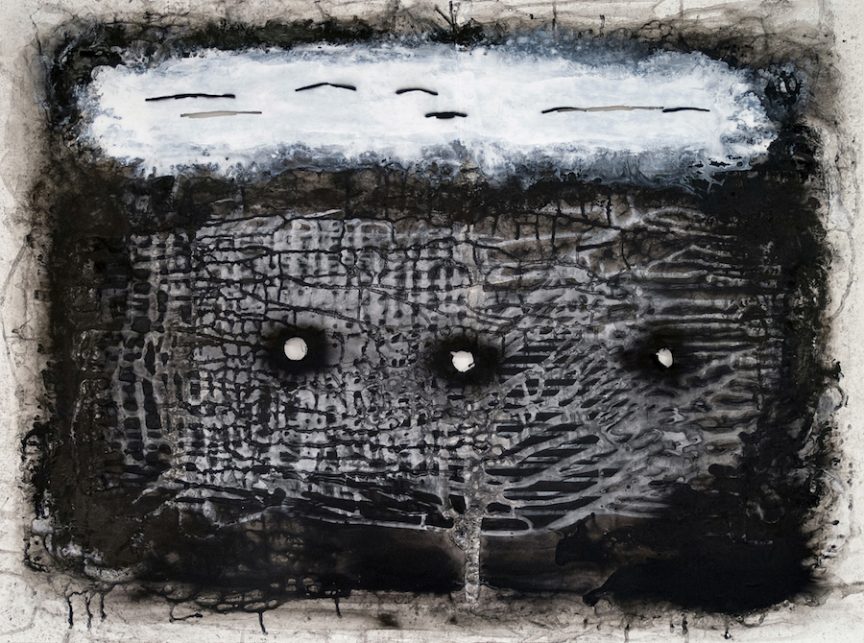Name: Malcolm Koch
Which came first in your life, the science or the art?
I feel lucky to have had the freedom to develop and foster an inquiring attitude from an early age. So from that perspective, I have had no barriers to seeking knowledge and understanding across many subject areas. But it was my artistic qualities that first received attention from others which lead me on to a career path. Later, in my quest to achieve a better understanding of our natural world, learning about scientific discoveries and their research became important. Over the years I’ve realised that there are similar questions that arise in many disciplines which can be linked together to improve our understanding. In artistic terms I relate these questions to an aesthetic language, or pattern. For instance: Why are some particles stable enough for life, and not others? Why are certain conditions suitable for life, and not others? Using this approach I’m trying to investigate further and communicate these ideas in my art.
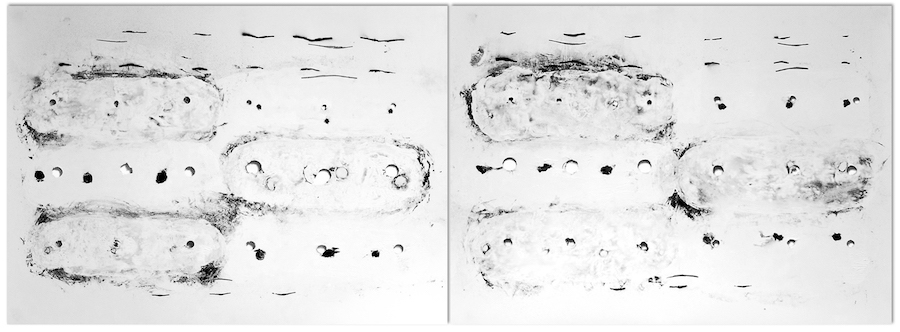
Carbon 12 – Visual entanglement series.
Which sciences relate to your art practice?
Particle physics and quantum cosmology has been a long-term interest on mine. It is the reason why I call my work ‘Membrane Art’. In 2004, I had the idea to create a series of events on some kind of curvature form. The curved structures would then provide the framework that allows for connections and entangled systems to manifest. Finally, the surface would be flattened to 2D-form for observation. It is the process of flattening or ‘compressing the depth’ that is the key to the aesthetic thought as it relates to how we view the world.
My recent thinking processes and working methods have extended the expression to interpret the science of particle physics. By constructing either a curled up, or a wavy membrane, I can create what I call ‘quantum brushstrokes’; either quark brushstrokes — represented by drill holes created on a particular kind of curl (for strong interactions), or electron brushstrokes — represented by saw cuts through a wavy surface (describing electromagnetic interactions). Each of these expressions are similar to the way any artist may make a brushstroke mark on a flat plane — there is initial contact, movement across and then an exit off the surface.
Whichever method is used, Membrane Art holds true — regardless of whether the events made on the surface are painted, sprayed, poured, drilled, sawed, stamped, cracked or any other kind of mark making. As it is the curved nature of the membrane that creates the structural expressions for the work — and provided the work is presented in a flattened 2D form for observation — it is a consequence of the aesthetic thought.
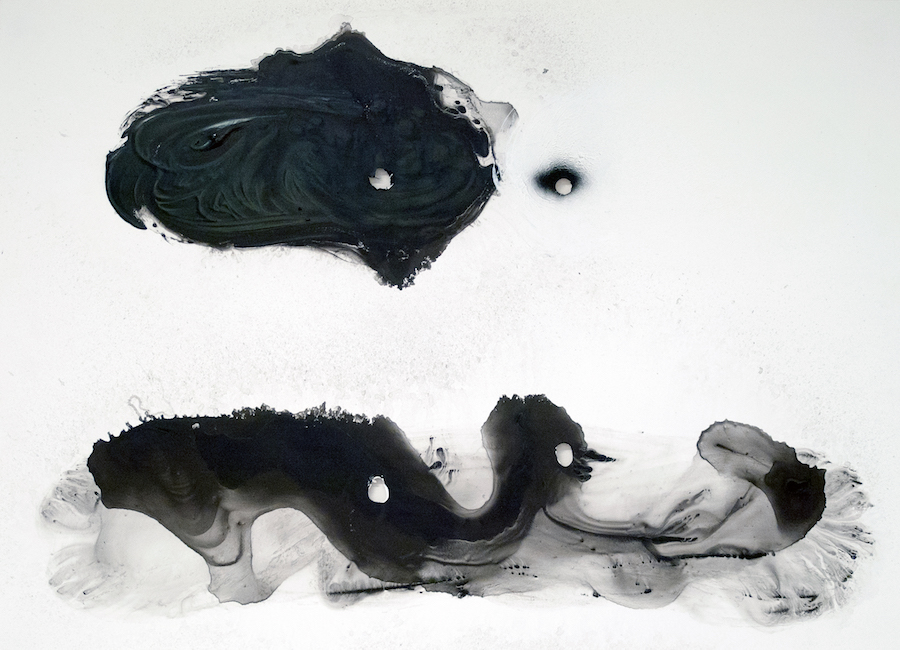
Short & sweet – Visual entanglement series.

Atomic face – Visual entanglement series.
What materials do you use to create your artworks?
Starting with a loose (unframed) membrane means that I need my materials to be robust and flexible enough to withstand often brutal treatment. Once the membrane is unravelled, nothing disappears on the 2D picture plane — all the nuances and faults lay bear. Therefore, I’ve found the thickest weave of belgium linen and professional quality oil paints to be the most suitable. Also, I have just started experimenting with synthetic membranes which offers other possibilities.
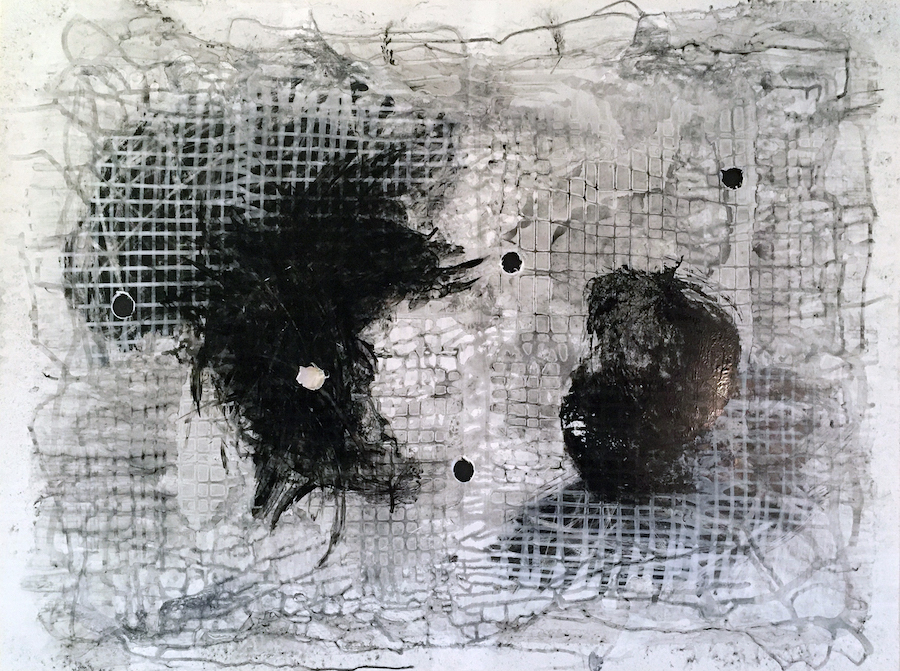
Annihilation point – Visual entanglement series.
Artwork/Exhibition you are most proud of:
Recently, an exhibition entitled, ‘Visual entanglement’, was held at the Royal Institution of Australia’s (RiAus) FutureSpace Gallery in Adelaide, South Australia. Through it I tried to bring all my ideas and thoughts together. Creating what I think is a happy synergy between science and art. A piece I created for the exhibition was entered into the prestigious Waterhouse Natural Science Art Prize 2016. I was selected as a finalist and have since been highly commended for the work. It’s an exhibition that puts me amongst a quality field of artists which I am most proud.
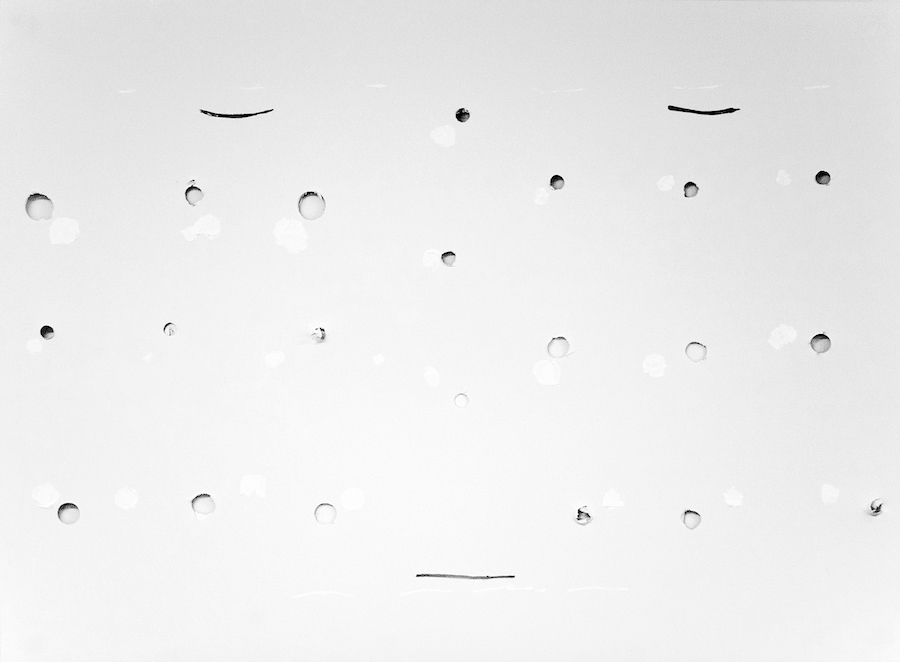
Lithium mesh – Visual entanglement series. Highly Commended at the prestigous Waterhouse Natural Science Art Prize 2016.
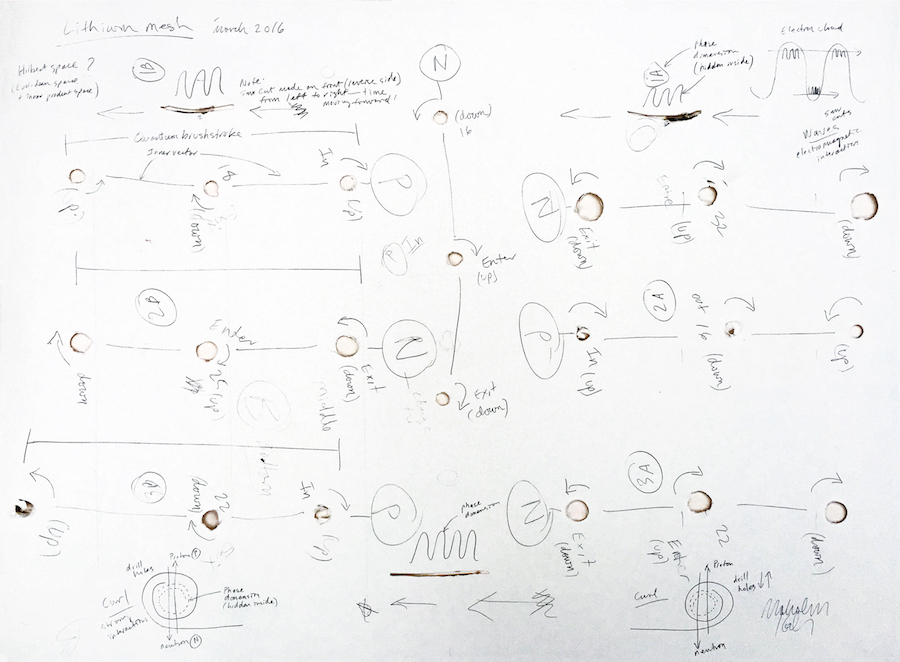
Lithium mesh reverse – These are Malcolm’s working notes as seen on the reverse side.
Is there anything else you want to tell us?
In my quest to achieve a better understanding of our natural world, learning about scientific discoveries and their research has became important. Over the years I’ve realised that there are similar questions between disciplines that arise which may be linked together to improve our understanding of nature. In artistic terms I relate these questions to an aesthetic language, or pattern. For instance; Theoretical Physicists postulate why are some particles stable enough for life, and not others? Why are certain conditions suitable for life, and not others? Using the aesthetic idea of Membrane Art — create an event on a curve and then unravel and observe the results on the 2D form — I’m trying to investigate further and communicate these questions in my art.
My ultimate aim is to provide a platform for an accessible visual dialogue to exist that postulates current particle physicists theories, so that through a range of presentations and exhibitions the community at large may gain greater interest and understanding in this fascinating and evolving science.
Share this Post

